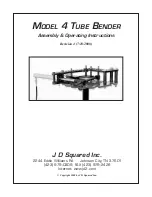
14
Take instant control of a illuminator by pressing the Override button on the home
page. This will countdown for 30 minutes to allow the user to control the illuminator
and then will revert to standard settings automatically or if the Override button is
deselected. Override is only available when the illuminator mode is set to
Local
,
HTTP + Local
or
VMS + Local
.
To operate the illuminator via a VMS or third party application that uses the Raytec
API, then the illuminator mode should be set to
VMS
or
VMS + Local
.
In VMS mode
the illuminator will ignore Photocell and External Input triggers and respond only to
valid VMS commands. In
VMS + Local
mode the illuminators can be controlled via a
VMS system whilst also still responding to local photocell and telemetry triggers.
To operate the illuminator with an application that uses the HTTP API, then the
illuminator mode should be set to
HTTP
or
HTTP + Local
.
In HTTP mode the
illuminator will ignore Photocell and External Input triggers and respond only to valid
HTTP commands. In
HTTP + Local
mode the illuminators can be controlled with
HTTP commands whilst also still responding to local photocell and telemetry triggers.
VMS integration allows the illuminator(s) to be directly controlled and triggered by
events within the VMS environment such as scheduled events, alarm triggers, camera
commands, etc.
HTTP Integration allows the illuminator to be directly controlled and triggered on
receipt of valid HTTP commands generated on the network from VMS, cameras or
other components capable of generating HTTP commands.
The illuminator mode can be changed on the Settings / Groups page. The default
illuminator mode is
Local
.
Standard Setup
–
Factory Defaults
The illuminator is operating in Local mode and will respond only to its own photocell
and telemetry status. By default the illuminator is NOT assigned to a group.
The illuminator will turn ON / OFF automatically when the photocell detects it is dark
/ light at 100% (soft start) via the photocell.















































